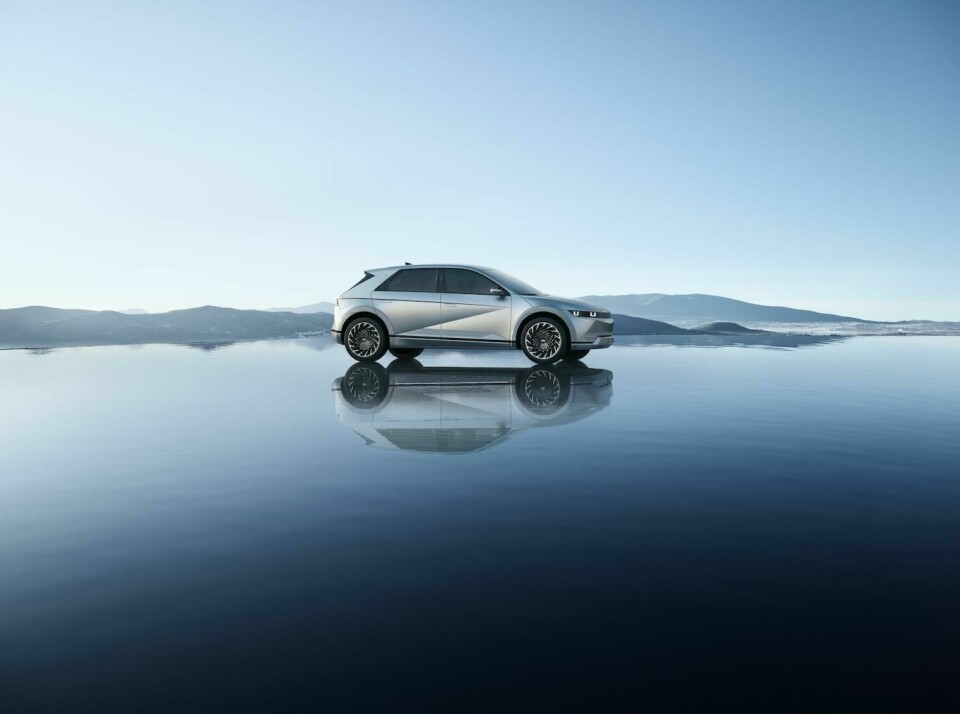
Hyundai opts for contrast with Ioniq 5
An angular exterior with a breezy interior – the Hyundai Ioniq 5 is the tale of two design approaches
Hyundai has unveiled its Ioniq 5 – the first model to come under the banner of the new ’Ioniq’ brand, which will feature more electric models with distinct designs. Influence has been drawn from the company’s first ever production car, the Hyundai Pony.
It is certainly boxy, like the Pony. The front end includes a clamshell bonnet that extends outwards to meet the front wheel arches and the V-shaped fascia. This V-shape is created by a small ridge that is narrow at the sides by increases in width at its centre. Above it sits the four rectangular daytime running lights (DLRs) and a matt black middle section with an embedded sensor.
It is immediately apparent that Hyundai has placed great importance on lighting. A blue glow pours out from the lights and dances across the reflective lined surface of the ridge, giving the entire front end a distinct appearance.
The body work under the V-shaped area contains two sharp lines that reflect the grooves on the bonnet. They also accentuate the wheel arches, which include slits that follow the curve of the arch. Bold lines feature on the sides of the car too, creating 45-degree angles that open out to the front end.
There is something clever going on with the bumpers and skidplates. They are simple in their design, with clean lower and textured upper sections. The upper section with its parallel lines is interrupted both at the front and on the sides of the vehicle by the lines in the body work. It almost looks unfinished, but clearly shows that the strong lines take precedent over delicate details. This focus on lines is reminiscent of Hyundai’s new Tucson with its geometric patterns.
Another V-shape area is placed at the rear, but this time it houses a pixilated light bar spanning the width of the car. The rectangular light signature continues here too, though the entire bar can light up to provide different patterns. There is also the same bumper design around the back, with the textured upper making way for the numberplate.
While the exterior is characterised by sharp lines, the interior is far more forgiving and airier. A neutral colour pallet made up of whites and greys ensures a calm atmosphere. There is some ambient lighting on the door sills to inject just a touch of colour, and a few lines of chrome to separate dash sections and for speaker cases.
The dash is short to maximise space for the front passengers. It is unadorned apart from a single large touchscreen unit that houses the displays for both the central screen and the driver information cluster. Beneath this is a separate unit for climate control, volume, and menu access. The door panels are also kept minimal with a line or two of stitching.
One of the features Hyundai is pushing is its reclining seats that push back to the “optimum angle, offering a weightless feeling for the occupant.” To achieve this, the company has reduced the thickness of the front seats by 30%, making sure that those in the back still have space.










